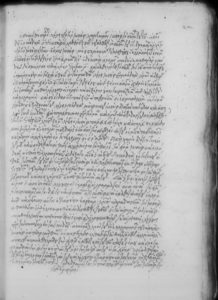“On the Funeral of Jesus”: Apocryphal Passion Traditions from a Fifteenth-Century Manuscript

The latest volume of Le Muséon (129: 251-78) features my article “Two New Witnesses to the Acta Pilati Tradition.” I first came across the two texts while working on my dissertation (way back in 2000!). The catalog for one of the Infancy Gospel of Thomas manuscripts (Vienna, Österreichische Nationalbibliothek, Cod. hist. gr. 91, 14/15th cent.) lists the first as a fragment of On the Passion, for the Preparation Day, a sermon attributed to Eusebius of Alexandria. The second appears under the title “Anonyme. Fragment über die Bestattung Jesu Christi.” It is a curious mix of canonical and noncanonical traditions: the burial of Jesus is derived mostly from the Gospel of John, and then much of the post-burial material has parallels in the Acts of Pilate and the Narrative of Joseph of Arimathea, though there is some never-before-seen material in the text also. The article took an awfully long time to see publication. I presented the text at a conference in Winnipeg in 2010 and for one reason or another it was turned down for publication by a few journals before finding a home at Le Muséon. For more information on the text, see the entry in e-Clavis: Christian Apocrypha. The abstract is reproduced below:
A 14th/15th-century Greek manuscript in Vienna (Cod. hist. gr. 91) contains two fragmentary texts relating to the Acta Pilati corpus of the Christian Apocrypha. The first is a fragment of On the Passion, for the Preparation Day, a sermon attributed to Eusebius of Alexandria drawing upon the Descensus ad inferos, found appended to several versions of the Acts of Pilate. The paper includes a transcription and translation of the fragment along with an overview of the publication history of the sermon. The second text is an unpublished, untitled excerpt from an unknown homily dealing with the burial of Jesus and the imprisonment of Joseph of Arimathea. This paper presents a diplomatic edition of the text with an English translation along with a discussion of its relationship to the Acts of Pilate and the related Narrative of Joseph of Arimathea.
